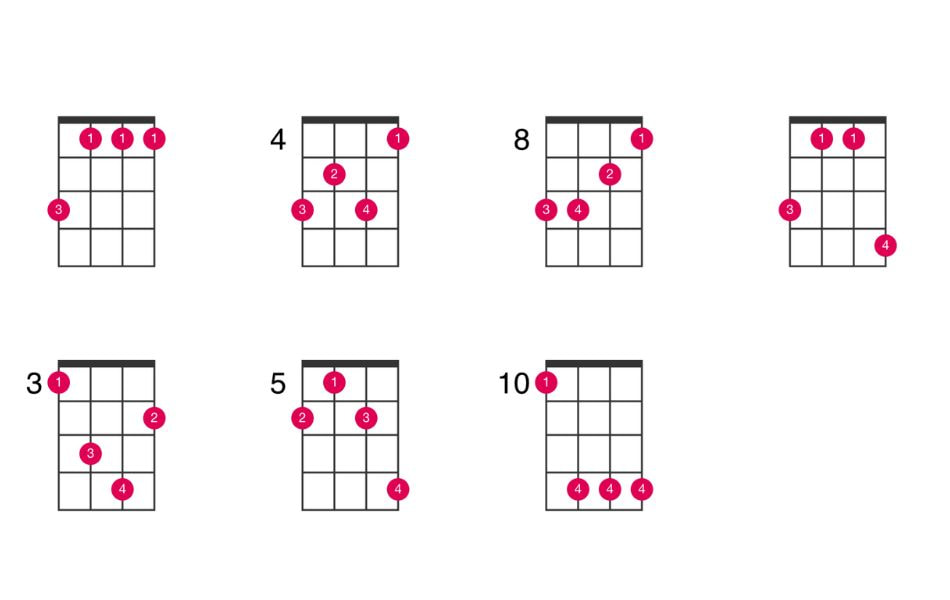The B flat minor ukulele chord unlocks a realm of musical expression for budding ukulele enthusiasts. If you’re a beginner seeking to infuse fresh tones into your ukulele practice, the B flat minor chord is a fantastic choice. In this instructional guide, we’ll delve into the fundamental notes comprising the B flat minor chord, explore three distinct fret positions for playing it, and introduce a couple of songs that provide a perfect playground for mastering this vital chord.
Contents
Explanation of B flat minor ukulele chord
The B flat minor ukulele chord, also referred to as A sharp minor (A#m), is constructed from the notes Bb, Db, and F. To form a Bb minor chord, we utilize the minor triad formula (1-b3-5) and apply it to the Bb major scale (Bb, C, D, Eb, F, G, A).
By identifying the first, third, and fifth scale degrees in the Bb major scale, we arrive at Bb, Db, and F. Since the Bb minor chord is classified as a minor chord, we lower the third scale degree by a half step as dictated by the minor triad formula. Consequently, we obtain the notes Bb, Db, and F, defining the Bb minor chord.

Some popular B flat minor chords
The number of B flat minor ukulele chords (Bb minor) can be described through various variations and different chord structures. The B flat minor chord consists of three main notes: Bb, Db, and F. On the ukulele, there are several ways to play different variations of this chord, depending on the finger placement and specific chord structures you choose.
Bb minor (Bbm) – Basic Chord
Index finger (1st fret) on the A string.
Middle finger (2nd fret) on the E string.
Let the other two strings (G and C) remain open and not fretted.
Barre chords
Bb minor (Bbm) Barre Chord refers to a chord structure created using the barre technique on a guitar or ukulele. The barre technique involves using one finger to press down multiple strings at the same fret, creating a “bar” effect. This allows you to create movable chord shapes along the instrument’s fretboard.
In the case of the Bb minor (Bbm) Barre Chord, you would place one finger (usually the index finger) across all the strings at a specific fret (typically the first fret or another fret) to create the Bb minor chord in a particular position on the fretboard.
Alternative B flat minor ukulele chords
The term alternative B flat minor chords refers to Bm chords played at positions other than the basic position. On various frets, this chord has different finger placements, providing different levels of flexibility. These placements result in entirely different sound effects. Some common positions include frets 3, 4, 5, 8, and 10.

The secret to playing proper B flat minor
To play the B flat minor chord flexibly on the ukulele, focus on practicing regularly and applying the following techniques to achieve a smooth sound. Use your index finger and ring finger (or middle finger) to place them on the appropriate frets. This will create more space between your fingers, aiding flexibility in transitioning between chords.
Explore different chord structures of B flat minor across various fret positions on the ukulele. Learn to play B flat minor at different positions to expand your playing ability. Experiment with the sliding technique to smoothly transition between chords. Learn and practice basic chords like C, G, Am, and F to familiarize yourself with finger placement and transitions between chords. After becoming comfortable with basic chords, progress to learning more complex chords such as Bb, Dm, Em, G7.
